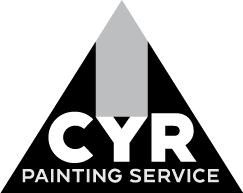Protection of a Coastal Home’s Exterior
Owning a luxury coastal home in Southern Maine is a dream come true, offering breathtaking views and a serene lifestyle. However, this idyllic setting comes with unique challenges, particularly when it comes to maintaining your home’s exterior. The relentless coastal weather can wreak havoc on even the finest materials. But worry not! With the right knowledge and approach, you can keep your home looking pristine and protected for years to come.
1. Understanding the Impact of Coastal Weather on Exterior Paint
Living by the ocean means your home is constantly battling the elements. Salt air, high humidity, and intense UV rays are a trifecta of paint-destroying forces. Salt air, in particular, is a silent aggressor. It carries corrosive chloride ions that can penetrate and degrade paint films, leading to blistering, peeling, and premature fading. Salt crystals can also accumulate on surfaces, trapping moisture and accelerating the breakdown of paint.
Humidity, a constant companion in coastal environments, creates an ideal breeding ground for mildew and mold. These unsightly growths not only detract from your home’s aesthetic appeal but can also compromise the integrity of the paint. Add to that the relentless UV rays, which can fade even the most vibrant colors, and you have a recipe for rapid paint deterioration.
Southern Maine’s seasonal shifts further complicate matters. From blistering summer sun to icy winter storms, your home’s exterior is subjected to extreme temperature fluctuations. This constant expansion and contraction can cause paint to crack and peel, especially if it’s not designed to withstand such variations. Therefore, a specialized painting approach tailored to the unique demands of this region is crucial.
Common Paint Failures and Prevention:
- Peeling and blistering: Caused by moisture trapped beneath the paint film. Prevent by ensuring proper surface preparation and using moisture-resistant primers.
- Fading: Resulting from UV exposure. Opt for fade-resistant paints and consider lighter colors that reflect sunlight.
- Mildew and Mold Growth: Thrives in humid conditions. Use mildew-resistant paints and ensure proper ventilation.
- Chalking: Chalk is where the paint surface breaks down into a powdery substance. Select high-quality paints with durable binders.
2. Choosing the Right Paint for Coastal Conditions
When it comes to protecting your luxury coastal home, not all paints are created equal. You need high-performance paints specifically formulated for oceanfront environments. Benjamin Moore’s “Coastal Home Exterior Painting Guide” highlights the importance of using paints that are fade-resistant, moisture-resistant, and mildew-resistant.
Key Paint Characteristics:
- Fade-Resistant: Look for paints with high-quality pigments that resist UV degradation. Acrylic latex paints are generally a good choice.
- Moisture-Resistant: Paints with excellent adhesion and water repellency prevent moisture from penetrating the surface. Elastomeric paints, known for their flexibility and weather resistance, are particularly effective.
- Mildew-Resistant: Paints containing mildewcides inhibit the growth of mold and mildew. These are crucial for humid coastal climates.
- Salt-Resistant: Paints that can withstand the corrosive effects of salt air are essential. Look for products specifically designed for coastal applications.
Recommended Brands and Finishes:
- For luxury homes, Benjamin Moore’s Aura Exterior and Sherwin-Williams’ Emerald Exterior are excellent choices. These paints offer superior durability, fade resistance, and mildew resistance.
- Satin or semi-gloss finishes are generally preferred for coastal homes as they are easier to clean and resist mildew growth. Avoid flat finishes, which tend to trap dirt and moisture.
3. Proper Surface Preparation for Long-Lasting Results
Even the best paint will fail if applied to a poorly prepared surface. In coastal environments, proper surface preparation is even more critical. Salt deposits, peeling paint, and damaged wood must be addressed before any new paint is applied. The Painting Contractors Association (PCA) emphasizes “The Importance of Surface Preparation” as a fundamental step in any painting project.
Key Preparation Steps:
- Salt Removal: Thoroughly wash the exterior with a mild detergent solution to remove salt deposits. Rinse thoroughly with fresh water.
- Power Washing: Use a power washer to remove loose paint, dirt, and mildew. Be careful not to damage the underlying surface.
- Wood Repair: Inspect wood surfaces for rot and damage. Replace any damaged wood with high-quality, pressure-treated lumber.
- Scraping and Sanding: Remove any remaining loose paint by scraping and sanding. Feather the edges of the remaining paint to create a smooth surface.
- Priming: Apply a high-quality, moisture-resistant primer to all bare wood and metal surfaces. Priming is crucial for ensuring proper adhesion and preventing moisture penetration.
- Sealing: Seal any gaps or cracks with a high-quality caulk to prevent water intrusion.
4. Maintenance Tips to Extend the Life of Your Exterior Paint
Maintaining your exterior paint is an ongoing process. Regular inspections and touch-ups can significantly extend the life of your paint job.
Maintenance Schedule:
- Annual Inspections: Inspect your home’s exterior at least once a year, preferably in the spring and fall. Look for signs of peeling, blistering, fading, or mildew growth.
- Touch-ups: Address any minor damage or peeling immediately. Small touch-ups can prevent larger problems from developing.
- Repainting: Schedule a full repaint every 5-7 years, depending on the paint quality and exposure to the elements.
- Regular Cleaning: Wash your home’s exterior with a mild detergent solution at least once a year to remove salt deposits, dirt, and mildew.
Signs of Early Paint Failure:
- Peeling or Blistering: Indicates moisture intrusion.
- Fading or Chalking: This suggests UV damage.
- Mildew or Mold Growth: Thrives in humid conditions.
- Cracking or Alligatoring: Caused by temperature fluctuations or improper paint application.
Preventative Measures:
- Protective Coatings: Consider applying a clear, protective coating over the paint to enhance its durability and resistance to the elements.
- Proper Ventilation: Ensure adequate ventilation in crawl spaces and attics to reduce moisture buildup.
- Landscaping: Trim back any vegetation that is touching the house to prevent moisture retention and mildew growth.
5. Hiring the Right Painting Professionals for Coastal Homes
Choosing the right painting professionals is essential for ensuring a high-quality, long-lasting paint job. Experience with waterfront homes is crucial. These professionals understand the unique challenges of coastal environments and have the expertise to select the right products and techniques.
Questions to Ask When Hiring a Painter:
- Experience: How many years of experience do you have painting coastal homes?
- References: Can you provide references from previous clients?
- Insurance and Licensing: Are you fully insured and licensed?
- Products: What brands and types of paint do you recommend for coastal homes?
- Preparation: What steps will you take to prepare the surfaces for painting?
- Warranty: Do you offer a warranty on your work?
Why Experience Matters:
- Professionals with coastal experience understand the importance of proper surface preparation, including salt removal and moisture sealing.
- They know which paints and primers are best suited for coastal conditions.
- They can identify potential problems, such as hidden rot or moisture damage, and address them before painting.
Value and Curb Appeal:
A high-quality exterior paint job not only protects your home from the elements but also adds significant value and curb appeal. As the National Association of Realtors (NAR) suggests, a well-maintained exterior can make a strong first impression and increase your home’s marketability. A well-maintained exterior is a clear indicator of the care you place in your luxury property.
By following these tips and working with experienced professionals, you can ensure that your Southern Maine coastal home remains beautiful and protected for years to come.

